calsfoundation@cals.org
Skirmish at Chalk Bluff (May 1–2, 1863)
| Location: | Clay County |
| Campaign: | Marmaduke’s Second Expedition into Missouri |
| Dates: | May 1–2, 1863 |
| Principal Commanders: | Brigadier General William Vandever (US); Major General John Sappington Marmaduke (CS) |
| Forces Engaged: | Second Division, Army of the Frontier and forces under command of Brigadier General John McNeil (US); Marmaduke’s Cavalry Division (CS) |
| Estimated Casualties: | Unknown |
| Result: | Confederate tactical Victory, Union strategic victory |
Chalk Bluff in Clay County, where Crowley’s Ridge is cut by the St. Francis River, was an important transit point during the Civil War between northeast Arkansas and the Missouri Bootheel. It was the site of the last engagement of Major General John Sappington Marmaduke’s fighting withdrawal from his second Missouri raid, April 17–May 2, 1863, as the Confederate forces held off an initially determined but ultimately faltering Union pursuit to escape back into Arkansas across the St. Francis River on a makeshift floating bridge.
Marmaduke entered Missouri with 5,000 men, of whom 1,200 were unarmed and 900 dismounted, planning to trap Union Brigadier General John McNeil at Bloomfield, Missouri. McNeil’s troops evacuated Bloomington ahead of Marmaduke and withdrew into the fortifications of Cape Girardeau. Marmaduke demonstrated against Cape Girardeau on April 26 with Colonel Joseph Shelby’s brigade, but he found himself facing a second front that evening when Union Brigadier General William Vandever’s Second Division of the Army of the Frontier appeared from the west and routed Colonel Robert C. Newton’s Arkansas Cavalry Regiment encamped on the road between Jackson and Dallas.
Marmaduke made a fighting retreat from Cape Girardeau to the St. Francis River. Lieutenant Charles Dow of the First Iowa Cavalry wrote of the latter part of the retreat that the Confederates “would make a stand on the crest of every hill.” The Union commanders repeatedly bungled their opportunities to bag Marmaduke. On April 27, McNeil failed to trap Marmaduke by not promptly executing Vandever’s orders for a flanking march on the Confederates at White Water Bridge, where a sharp engagement took place. Pursuing Marmaduke toward Bloomfield, a small number of the Union troops crossed the Castor River on April 29 after a hot three-hour fight with a rearguard composed of Colonel Gideon W. Thompson’s Sixth Missouri Cavalry. The pursuit entered Bloomfield on April 30, and McNeil was given a command made up of the freshest Northern troops to pursue Marmaduke down the military road that ran along Crowley’s Ridge to Chalk Bluff.
In the meantime, Marmaduke was making final preparations for his escape. On April 21, Lieutenant Colonel Solomon G. Kitchen’s Missouri Cavalry Battalion, accompanied by Missouri State Guard Brigadier General Merriwether “Jeff” Thompson, had secured the Missouri bank of the St. Francis at Chalk Bluff when it captured Captain Richard M. Hulse and twenty-three men of Company H, McNeil’s Second Missouri State Militia Regiment.
Jeff Thompson, along with Major Robert Smith of Marmaduke’s staff and Major Robert Lawrence of Shelby’s staff, supervised the construction of a bridge across the St. Frances River at Chalk Bluff. With frontier know-how, a floating log bridge twice as long as the river‘s breadth was built and guyed in place with grape vines and a few ropes. In addition, a sturdy log raft was constructed to transport the artillery.
Colonel George W. Carter’s Texas cavalry brigade and Shelby’s Missouri cavalry brigade, along with Colonel John Burbridge’s Missouri cavalry brigade, fought a series of final rearguard actions, beginning at Four Mile, located four miles up Crowley’s Ridge northeast of Chalk Bluff, in order to allow the Confederates to escape across the river into Arkansas. A strong Confederate defensive position was established at Gravel Hill, a mile and a half below Four Mile, or two and a half miles above Chalk Bluff, and a late afternoon attack there on May 1 led by the Second Missouri State Militia was repulsed. That night, the Confederates quietly left their positions and withdrew across the St. Francis. In the dark of night, the infantry crossed the rude bridge in a procession regulated by the strictest officers standing with pistols in hand. Jeff Thompson made twenty crossings with his raft to get the dismounted Confederate artillery across, the wheels and cannon of each piece transported on one trip and the trail and axle on another. The horses were made to swim across. By sunup, Marmaduke’s whole command was safely across, with the exception of a few skirmishers left to delay the Union advance, and the bridge was cut loose from the Missouri bank of the river. On the morning of May 2, the Union troops advanced to the St. Francis crossing to find that their prey had escaped. Two hundred picked riflemen stationed on the Arkansas shore, directed by Arthur St. Clair of Shelby’s command, along with artillery, fired on the Union troops, and McNeil, the original object of the entire raid, was unhorsed. The action concluded as fierce artillery fire was directed across the river from Union guns with little effect.
As is often the case in the Civil War west of the Mississippi, exact casualty figures are not available for this particular battle. Marmaduke reported that his casualties for the entire raid—April 17–May 2, 1863—into Missouri were thirty killed, sixty wounded, and 120 missing. The official Union return of casualties showed twenty-three killed, forty-four wounded, and fifty-three captured or missing. The Battle of Chalk Bluff, in spite of Marmaduke’s successful escape across the St. Francis River, marked the end of an ineffective attempt to disrupt Union dominance in southeastern Missouri. From these events, a careful observer should have learned that, however daring a cavalry raid might be, it was not going to affect the ultimate outcome of the war.
For additional information:
Christ, Mark K. Rugged and Sublime: The Civil War in Arkansas. Fayetteville: University of Arkansas Press, 1994.
Edwards, John Newman. Shelby and His Men, or, the War in the West. Waverly, MO: General Joseph Shelby Memorial Fund, 1993.
Lothrop, Charles H. A History of the First Regiment Iowa Cavalry Veteran Volunteers. Salem, MA: Higginson Book Company, 1998.
Ponder, Jerry. The Battle of Chalk Bluff: An Account of General John S. Marmaduke’s Second Missouri Raid. Doniphan, MO: Ponder Books, 1994.
Stanton, Donald J., Goodwin F. Berquist, and Paul C. Bowers, eds. The Civil War Reminiscences of General M. Jeff Thompson. Dayton, OH: Morningside House, Inc., 1998.
Michael Taylor
Albemarle, North Carolina
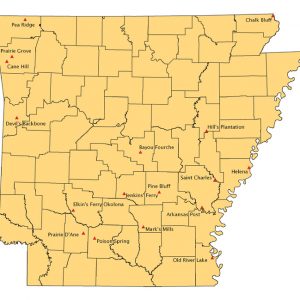 Civil War Events Map
Civil War Events Map 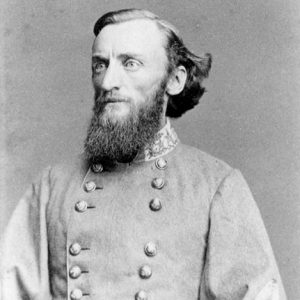 John Marmaduke
John Marmaduke 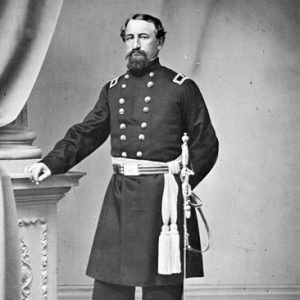 John McNeil
John McNeil 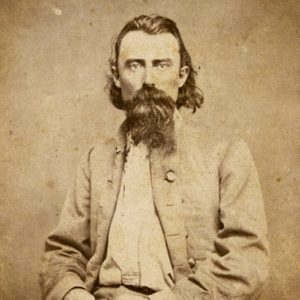 Joseph Shelby
Joseph Shelby 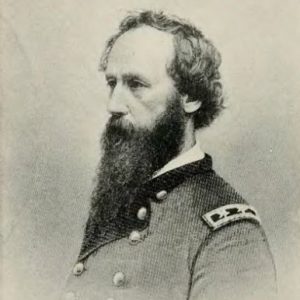 William Vandever
William Vandever 



Comments
No comments on this entry yet.